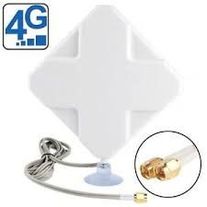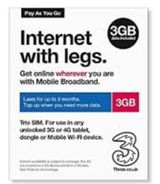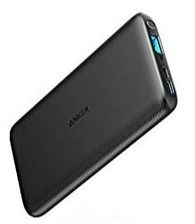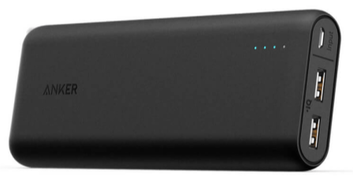Staying Connected - Tech Tips
The most common question I see time and again is all about staying connected whilst traveling. Gone are the days of heading off into the great unknown with family and friends expecting nothing more than a postcard a few weeks hence. Your mobile devices are not just great ways to keep in touch with loved ones or keeping your FaceBook and Insta feeds full of adventure and excitement - they're important tools that keep you on the right track too! Helping you find your way with various navigational apps and local area information, the best attractions, travel tips, restaurants and beaches are all at your fingertips in seconds. I certainly don't leave home without easy online access!
Nowadays, well at least until Brexit, you can use your mobile phone abroad much as you would at home. However, you must check with your phone service provider what their European restrictions are. Some only allow 60 days use per year abroad and apply a cap on the amount of data you use. Some don't impose such restrictions but they do apply controls on the speed of your connection especially to sites other than social media and online news sites. Its VERY important you check your own contracts and make sure your supplier provides the services you need the most - especially if you intend to support yourself with online work during your trip.
If you intend to run several devices when abroad, or you want to backup your photos in the cloud, write a blog, listen to the radio, or stream music or even watch some on demand TV you'll need some more specific, but affordable, gear.
Here's my toolkit for staying connected on the move:
Mobile WiFi
So really, if you have an all singing all dancing smartphone and your service provider allows you to use your UK allowance including setting up a hotspot in Europe (and maybe beyond) why bother with anything else?
In truth you will see a faster download speed on a mobile wifi unit and it will make connecting laptops, tablets and e-readers a great deal easier - you will also be able to monitor your useage much more closely.
Nowadays, well at least until Brexit, you can use your mobile phone abroad much as you would at home. However, you must check with your phone service provider what their European restrictions are. Some only allow 60 days use per year abroad and apply a cap on the amount of data you use. Some don't impose such restrictions but they do apply controls on the speed of your connection especially to sites other than social media and online news sites. Its VERY important you check your own contracts and make sure your supplier provides the services you need the most - especially if you intend to support yourself with online work during your trip.
If you intend to run several devices when abroad, or you want to backup your photos in the cloud, write a blog, listen to the radio, or stream music or even watch some on demand TV you'll need some more specific, but affordable, gear.
Here's my toolkit for staying connected on the move:
Mobile WiFi
So really, if you have an all singing all dancing smartphone and your service provider allows you to use your UK allowance including setting up a hotspot in Europe (and maybe beyond) why bother with anything else?
In truth you will see a faster download speed on a mobile wifi unit and it will make connecting laptops, tablets and e-readers a great deal easier - you will also be able to monitor your useage much more closely.
TP-Link M7350 4G Huawei 4G LTE E5786 Antenna 4G LTE Huawei Compatible
The pocket sized TP-Link M3750 is not locked to any particular mobile phone network - so you can use a data SIM from a UK network such as 3 or Vodaphone or you can use a local SIM from whatever country you are visiting. With connectivity for up to 10 devices, a long battery life and high download speeds this is a powerful and extremely easy to use piece of kit.
I have used this device across 15 different European countries with SIM cards from the UK, Norway, Morocco and Hungary. For the price it's a brilliant, hard working and affordable addition to your Travel Tool Kit
As and when I am ready to upgrade my MiFi unit the Huawei range will be my go to brand. Pretty much all the same features as the TP Link but their absolute selling point for me is the ability to extend their range by adding an external antenna. An ideal feature for when you're in a poor signal area.
I have used this device across 15 different European countries with SIM cards from the UK, Norway, Morocco and Hungary. For the price it's a brilliant, hard working and affordable addition to your Travel Tool Kit
As and when I am ready to upgrade my MiFi unit the Huawei range will be my go to brand. Pretty much all the same features as the TP Link but their absolute selling point for me is the ability to extend their range by adding an external antenna. An ideal feature for when you're in a poor signal area.
International Internet - Which SIM?
There are so many more options available now that mobile roaming charges have been abolished in Europe. It's well worth doing your own research across your favourite phone/data service providers. Remember to check their useage policy carefully.
That said, 3 have been at the forefront of this market with their Feel At Home package for some time. These SIMs are primarly designed for phones but can be used in MiFi units too.
Another offering from 3 is the Internet With Legs data card - specifically for use in mobile wifi devices. They come preloaded with anything from 1GB up to 24GB of data. I find them the easiest and most reliable. I usually buy several and take them with me on long trips.
That said, 3 have been at the forefront of this market with their Feel At Home package for some time. These SIMs are primarly designed for phones but can be used in MiFi units too.
Another offering from 3 is the Internet With Legs data card - specifically for use in mobile wifi devices. They come preloaded with anything from 1GB up to 24GB of data. I find them the easiest and most reliable. I usually buy several and take them with me on long trips.
Portable Power - On The Go Battery Packs
So now you're connected you'll probably find your mobile devices need a bit of extra juice for a full day out of adventuring. Avoid the crushing disappointment and huge frustration of a dying smartphone just when you need Google maps or a brilliant photo op opens up in front of you!
Going back to my festival days I have always used power pack to keep me juiced up when away from conventional electric points for charging.
I've always got two power packs, one lighter unit and one heavy duty unit.. Between them I can charge my phone and tablet many times over the course of several days. The longer life battery pack take quite a while to recharge whereas the shorter life one is much quicker - they will all charge from a 12v connection too.
I really rate the Anker brand - they charge up quickly with the smaller PowerCore 1000 being a perfect handbag sized juice booster! The slightly larger PowerCore 20100 is still extremely portable if a bit bulkier and heavier - added bonus that it has dual outputs so you can charge two devices at the same time.
The key feature to look for here is the 'mAH' rating, this tells you how much energy the pack will store ergo how frequently you can charge your device before having to recharge the battery pack. The greater the 'mAH' the heavier/bulkier the power pack will be but the number of times you can charge a device is greater.
Anker PowerCore 10000 Anker PowerCore 20100
Going back to my festival days I have always used power pack to keep me juiced up when away from conventional electric points for charging.
I've always got two power packs, one lighter unit and one heavy duty unit.. Between them I can charge my phone and tablet many times over the course of several days. The longer life battery pack take quite a while to recharge whereas the shorter life one is much quicker - they will all charge from a 12v connection too.
I really rate the Anker brand - they charge up quickly with the smaller PowerCore 1000 being a perfect handbag sized juice booster! The slightly larger PowerCore 20100 is still extremely portable if a bit bulkier and heavier - added bonus that it has dual outputs so you can charge two devices at the same time.
The key feature to look for here is the 'mAH' rating, this tells you how much energy the pack will store ergo how frequently you can charge your device before having to recharge the battery pack. The greater the 'mAH' the heavier/bulkier the power pack will be but the number of times you can charge a device is greater.
Anker PowerCore 10000 Anker PowerCore 20100






